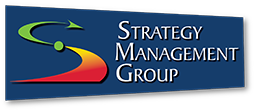
Hungry for Some Perspectives?
One of the participants in a recent Balanced Scorecard Professional Certification workshop was struggling with the difference between Strategic Themes and Balanced Scorecard Perspectives. In fact, he fundamentally questioned the need for both. His argument was that Themes and Perspectives are essentially both focus areas of some sort. Finally, he asked that I show him how different restaurants would use the terms if they were to create a balanced scorecard.
His request actually proved to be a great teaching example. Different restaurants, because they are in roughly the same business, will use roughly the same four Perspective names. All restaurants have to hire and train cooks and other personnel, build or rent physical facilities and use technology of some sort (Organizational Capacity Perspective). All restaurants have to order, prepare, and serve food or otherwise provide a particular atmosphere / experience of some sort that depends heavily on efficient internal processes (Internal Process Perspective). All restaurants want to please customers of one segment or another (Customer Perspective) and they want to control costs and make money (Financial Perspective). Restaurants might tweak the names of these perspectives to match their specific culture, but the concepts will be the same.
It is in the Strategic Themes and the accompanying Strategic Results that the restaurants will likely be different. Strategic Themes are derived from each restaurant’s unique mission, vision, values and customer value proposition. One restaurant might specialize in Mexican cuisine and another Italian. One might deliver a low cost family experience while another might be focused on luxurious atmosphere and world class service. Maybe one is trying to grow into a worldwide franchise with thousands of stores that all look alike and another is trying to be the finest unique restaurant in New York City.
These differences in competitive positions will result in different strategies as represented by the Strategic Themes. For each Theme, there is a specific Strategic Result that the organization is trying to accomplish. Strategic Results define the desired outcome or goal of the Theme and indicate how we will know success within the Theme. Strategic Results are written in “end state” declarative language, like “we are number one or two in 20 geographic markets,” rather than describing future actions, e.g. “we will increase our marketing efforts”.
The point is that the organization’s business model determines what Perspective names you select and their sequencing for the strategy map. But the specific strategy that you want to implement to compete in your chosen marketplace determines which Themes you select. Together, Perspectives and Themes form the foundational framework for the resultant balanced scorecard.
For more on how to develop and manage strategy using Themes, Results, and Perspectives, please see The Institute Way – Simplify Strategic Planning and Management with the Balanced Scorecard.



 This point was vividly illustrated to me in a phone call I had last week. A CEO called to say he wanted to use a balanced scorecard – he had seen a competitor company achieve outstanding performance which they attributed to their use of balanced scorecard. Furthermore, he had already figured out the five most important KPIs for his own company…and he asked if we could help him get the managers and employees in his 36 locations to understand and get motivated to take action in alignment with these 5 KPIs. SIGH….I knew it would be a long conversation but he was so sincere and motivated that I dove in and began to try and pull the “middle part” out of his head by asking him questions.
He had a very clear picture of the future state of his company and his descriptions were compelling and detailed. As we talked, I began to loosely translate his word images to strategic objectives…I could almost create a strategy map from his stories. And that’s ONE point: A strategy map tells a story, it paints the picture of the organization’s future state and how it plans to get there. He seemingly skipped this and other important steps when he leaped from vision to KPI’s and, therefore, he was missing the logical linkages.
Furthermore as I helped him cross-walk his 5 KPIs to the potential objectives, I was able to show him that his KPIs were all in the results perspective(financial and customer)…he hadn’t fully considered the driver KPIs that would be needed until I asked enough questions to start teasing the driver strategic objectives out of his head. In other words, he was asking his employees to focus on end results without articulating a strategy to achieve those results.
After about an hour he said, “I get it. I skipped the middle part and that’s the MOST important part. I was told that there is a LOT of work to get to meaningful and strategic KPIs but I didn’t understand the middle part. It is truly important.” Eureka!
And one final point that I made ….and which he definitely understood: no matter how smart and fast-thinking he is, if he doesn’t involve his team in the creation of strategy and the strategic balanced scorecard, they will be unlikely to buy-into or actively engage in improving the company’s performance. He knows that he must SLOW DOWN and let other not only catch up, but have a SAY in strategy and KPIs.
Are you a fast-thinking CEO who “skips the middle” or do you work for someone who does? You may enjoy other real stories and examples in the
This point was vividly illustrated to me in a phone call I had last week. A CEO called to say he wanted to use a balanced scorecard – he had seen a competitor company achieve outstanding performance which they attributed to their use of balanced scorecard. Furthermore, he had already figured out the five most important KPIs for his own company…and he asked if we could help him get the managers and employees in his 36 locations to understand and get motivated to take action in alignment with these 5 KPIs. SIGH….I knew it would be a long conversation but he was so sincere and motivated that I dove in and began to try and pull the “middle part” out of his head by asking him questions.
He had a very clear picture of the future state of his company and his descriptions were compelling and detailed. As we talked, I began to loosely translate his word images to strategic objectives…I could almost create a strategy map from his stories. And that’s ONE point: A strategy map tells a story, it paints the picture of the organization’s future state and how it plans to get there. He seemingly skipped this and other important steps when he leaped from vision to KPI’s and, therefore, he was missing the logical linkages.
Furthermore as I helped him cross-walk his 5 KPIs to the potential objectives, I was able to show him that his KPIs were all in the results perspective(financial and customer)…he hadn’t fully considered the driver KPIs that would be needed until I asked enough questions to start teasing the driver strategic objectives out of his head. In other words, he was asking his employees to focus on end results without articulating a strategy to achieve those results.
After about an hour he said, “I get it. I skipped the middle part and that’s the MOST important part. I was told that there is a LOT of work to get to meaningful and strategic KPIs but I didn’t understand the middle part. It is truly important.” Eureka!
And one final point that I made ….and which he definitely understood: no matter how smart and fast-thinking he is, if he doesn’t involve his team in the creation of strategy and the strategic balanced scorecard, they will be unlikely to buy-into or actively engage in improving the company’s performance. He knows that he must SLOW DOWN and let other not only catch up, but have a SAY in strategy and KPIs.
Are you a fast-thinking CEO who “skips the middle” or do you work for someone who does? You may enjoy other real stories and examples in the


 I was recently on yet another military base and had the opportunity to visit with a former Institute student – a U.S. Army Colonel. He had deployed to Kuwait just days after attending our Balanced Scorecard Boot Camp course in 2011. Upon arrival he found that the Army Contracting Command for which he was to be responsible was faced with tremendous challenges – from dealing with perceptions of corruption in the local supply chain to managing the extreme complexities of contracting for all of the products and services needed by the Army in such a challenging location.
This particular command needed a rapid transformation in order to achieve his vision of “being recognized by our customers as the best contracting office in the U.S. Army.” – a bold vision considering the challenges that he and his team were facing.
But before his tour of duty had ended, his contracting command had, indeed, received accolades and acknowledgement as being one of the best Army Contracting Commands anywhere in the world.
How did he lead his Command to achieve this vision in such a short time period? He applied his new knowledge and developed a strategic balanced scorecard.
A few “secrets” to the success of his scorecard implementation should sound familiar to students of The Institute Way:
I was recently on yet another military base and had the opportunity to visit with a former Institute student – a U.S. Army Colonel. He had deployed to Kuwait just days after attending our Balanced Scorecard Boot Camp course in 2011. Upon arrival he found that the Army Contracting Command for which he was to be responsible was faced with tremendous challenges – from dealing with perceptions of corruption in the local supply chain to managing the extreme complexities of contracting for all of the products and services needed by the Army in such a challenging location.
This particular command needed a rapid transformation in order to achieve his vision of “being recognized by our customers as the best contracting office in the U.S. Army.” – a bold vision considering the challenges that he and his team were facing.
But before his tour of duty had ended, his contracting command had, indeed, received accolades and acknowledgement as being one of the best Army Contracting Commands anywhere in the world.
How did he lead his Command to achieve this vision in such a short time period? He applied his new knowledge and developed a strategic balanced scorecard.
A few “secrets” to the success of his scorecard implementation should sound familiar to students of The Institute Way:

 I’ve already admitted that I am a geek, so let me give you an example from my own life. When I was in college, I had to go over to the business building to take a class. As I sat down and prepared for class to start, I noticed something carved into the top of the desk. It was a calculus equation. When read aloud using the literal “word” meaning versus the “math” meaning, the equation said: “The limit (e.g., cannot go any further) of an Engineering Student when his calculus GPA approaches Zero is a transfer to the College of Business”. I laughed out loud. Several of my friends had recently transferred out of engineering and into business. I can only imagine which one scrawled this equation on the desk. Or how many students had looked at it and not understood that it was a funny message.
Understanding that math is actually a language is a very important concept for developing meaningful performance measures for your organization. Some people are fluent in the language of business. Others are fluent in the language of math and statistics. Few, it seems, are fluent in both.
We’ve found that whenever an organization is struggling to develop KPIs (Key Performance Indicators), it is most often due to a “language barrier” in translating from the strategic intent of the business (words and sentences) to meaningful measures of performance (numbers and equations).
And there is actually a very simple solution. In the Institute’s Nine-Step-To-Success™ framework, we use something called “intended results”. These brief written statements are the “Rosetta stone” for translating the “in plain English” strategic intent of an objective into a meaningful measure that can be used for strategic performance analysis.
To learn more, check out Chapter 10 of
I’ve already admitted that I am a geek, so let me give you an example from my own life. When I was in college, I had to go over to the business building to take a class. As I sat down and prepared for class to start, I noticed something carved into the top of the desk. It was a calculus equation. When read aloud using the literal “word” meaning versus the “math” meaning, the equation said: “The limit (e.g., cannot go any further) of an Engineering Student when his calculus GPA approaches Zero is a transfer to the College of Business”. I laughed out loud. Several of my friends had recently transferred out of engineering and into business. I can only imagine which one scrawled this equation on the desk. Or how many students had looked at it and not understood that it was a funny message.
Understanding that math is actually a language is a very important concept for developing meaningful performance measures for your organization. Some people are fluent in the language of business. Others are fluent in the language of math and statistics. Few, it seems, are fluent in both.
We’ve found that whenever an organization is struggling to develop KPIs (Key Performance Indicators), it is most often due to a “language barrier” in translating from the strategic intent of the business (words and sentences) to meaningful measures of performance (numbers and equations).
And there is actually a very simple solution. In the Institute’s Nine-Step-To-Success™ framework, we use something called “intended results”. These brief written statements are the “Rosetta stone” for translating the “in plain English” strategic intent of an objective into a meaningful measure that can be used for strategic performance analysis.
To learn more, check out Chapter 10 of 
